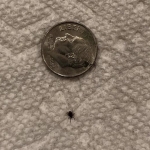
As follow up to the puppy training blogs I posted previously, I thought it a good idea to talk about some common issues that you see a little later into puppyhood (and kitten hood for that matter). I will separate this into part one and part two, because there are too many different training tips to fit into one post. They are all good, but you may find you use some more than others, depending on your needs. Some good training resources will be listed as well in the second post.
Puppy Issues: Many owners begin their relationship with their new puppy, often, with an idealistic view of the relationship. I have learned that I cannot take for granted that my clients already know how to properly shape behaviors or handle problems. It is important for me to ask, and it is important that you also discuss it when you are at your veterinarian for your frequent visits during the puppy series of vaccines and exams. It is good to address unwanted behavior early, so that it does not become habit, and thus harder to correct. The veterinarian’s assistants and staff are also a wealth of knowledge and should be referred to as well for advice. I encourage clients to call, if something comes up or they forget to ask their question during their visit.
Recommended rules for training:
1. Don’t take good behaviors for granted. As rewarding a pet is the best way for the pet to learn what to do, make a point of doing so or acceptable behavior. Look actively for, and reward, all desired behaviors so that the pet can be praised.
2. Set the pet up to succeed. Most puppies engage in quite predictable behaviors. They are active, inquisitive and get into everything. Puppies will eliminate anywhere and chew on everything until trained. It is up to you to prevent mistakes by moving things out of reach and providing proper training. Close supervision or appropriate confinement may constantly be necessary for some pets until they reach two years of age. The young pet has a short attention span and is easily distracted. You are setting the pet up, inadvertently, to fail if you train for too long or ask him/her to do something in the presence of a strong distraction.
3. Be consistent The whole family needs to sit down and agree upon which behaviors are acceptable and which are not. It is very important that all members handle specific behaviors in the same way. The more consistent you all are, the less confused the pet will be. This will delay learning and may cause anxiety in the pet, which could then result in more serious behavior problems.
4. Avoid punishment. You must understand that if you strike your pet, the consequences can be disastrous. Hand-shyness, fear-biting, avoidance of humans, aggression and submissive urination may all result from physical punishment. One of the most important things for your pet to learn is that the human hand is a friend. A loud, abrupt, semi-startling reprimand is usually adequate to interrupt an undesirable behavior by a young pet. To be effective, the correction must be given during the behavior, every time the behavior occurs, and should be intense enough to stop the behavior without causing significant anxiety. The correction should also stop when the behavior stops. If necessary, shaking a can, air horns, whistles or other devices may be used if the pet ignores verbal corrections. Do not rely on punishment alone to shape your pet’s behavior. Again, reinforce desirable behavior.
For behaviors that occur when family is not present, environmental devices can be used to keep a pet away from area where undesirable behaviors might occur (some apply to dogs, cats, or both).
– electric fence in-home plates can be used to help a pet avoid a room. They are available through the suppliers of the outdoor installation equipment.
– upside down mouse traps
–Scatmat: A mat that responds to touch with low grade static electronic pulses. 
(dogs and cats)
-Scraminal – motion-activated alarm : Motion and heat detectors will cause a beep when area is approached by the pet. (dogs and cats.)
 –Snappy trainers: A mouse-trap like device that makes a noise when tripped. Not painful. (Dogs and cats.)
–Snappy trainers: A mouse-trap like device that makes a noise when tripped. Not painful. (Dogs and cats.)
 –Spray Barrier : System detects movement into the area you want avoided and emits a low frequency radio signal that causes a warning beep. If animal still approaches, collar on dog will emit a small amount of citronella spray, the scent of which will be be the negative association you want them to have with the area. (dogs)
–Spray Barrier : System detects movement into the area you want avoided and emits a low frequency radio signal that causes a warning beep. If animal still approaches, collar on dog will emit a small amount of citronella spray, the scent of which will be be the negative association you want them to have with the area. (dogs)
Punishment. So to review: No physical punishment, timing is key, intensity should be effective without producing anxiety, consistency within whole family, punishment ends when the behavior stops, and avoid association with the person doing the punishing.
*Always reinforce alternate, desirable behaviors.
Leadership Exercises:
The purpose of these exercises is to gain more control of your pet, increase their dependability in responding to commands, provide structure and consistency in the interaction between them and the family, and to reduce impulsive behavior. Keep these rules in place until you have good control of the pet and he/she dependably listens and responds to commands. In most cases, this will be at least 4-6 weeks before going back to your usual interaction with your pet. Again, consistency is very important.
1. Nothing in life is free
Ask your pet to respond to a command, such as “Sit,” prior to getting anything it wants or needs. (Before putting food down, going treats/toys, beginning play, petting, allowing on furniture, picking up , etc.)
2. Don’t tell me what to do
-Do not allow the pet to successfully solicit attention from you.
-Any nudge, whine, bark, push, lean, etc. for attention must be ignored. Pull your hands in, lean away from the pet and look away from it. Get up and walk away if the pet is exceptionally pushy and difficult to ignore.
– Do not scold, say anything or push the pet away from you.
-Once the pet stops soliciting for ten seconds, you can ask it to sit or sit/stay and give it some attention.
-Another strategy is to take control by asking the pet to sit as it walks up to you, but before it attempts to be pushy for attention.
3. Don’t move without permission
-Anytime you begin to move from one area of the home to another, ask the pet to sit/stay and wait for a release command to follow you.
– Also request a “sit/stay” prior to going up and down stairs, as well as in and out of the home.
-You only need the pet to stay for one to two seconds, and you do not need to walk away from the pet during the stay to do this properly.
-It is not as necessary to be as rigid about this rule as the previous two. It is understandable that it may be difficult or impractical to have the pet sit/stay every time you move.
There are many advantages to teaching your puppy to come and sit on command. Using food-lure-reward methods, this can be done in about five minutes. It is something I often do during an exam, and it is something you can do as well, even if you are not at the vet.
Stand two feet away from the puppy, show it a piece of food held between your thumb and forefinger and wiggle your fingers. As the pup approaches, say its name and call it . When your pup reaches the food, slowly and deliberately move it over the top of its head. As the pup moves its head back to follow the food, he will move into a sitting position. As he does this, say “Sit”. Be careful not to hold the food too high over his head as this may encourage him to jump up for it.
This training tips will help your pet learn to obey commands at a very early age, will help you establish leadership, gain control of your pet, and serve as a tool for socializing. Teaching the “Come-sit” decreases jumping-up behaviors because the pet learns to approach and greet by sitting. It also decreases hand shyness by associating an outstretched hand with a food reward. That’s a big return for a five-minute investment in your time.
Most of a pet’s learning occurs by simply having stimuli it likes or dislikes associated with the behavior. If associated with something it likes, it will have a high likelihood of being repeated, while behaviors associated with something aversive are likely to disappear. Timing is very important. Punishment that occurs too late (more than a few seconds after the heavier) will be ineffective and may lead to other problems. For example, a destructive dog that is harshly disciplined for its misdeeds when it greets the owners each day may start submissively urinating near the from door in anticipation of the daily punishment. On the other hand, when you give energetic greetings to a pet that is excited and bouncing off the walls, you are reinforcing unruly greeting behaviors.
Think about, and try, these tips. Hopefully they will work. More to follow.
Dr. Dawn
Please share and subscribe here





